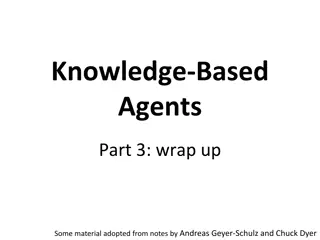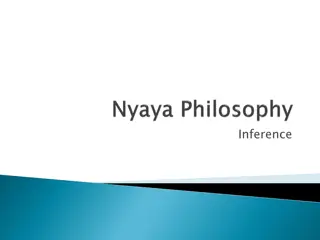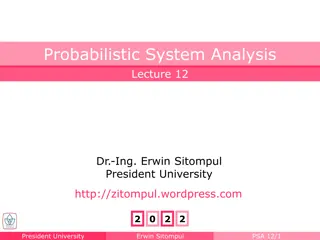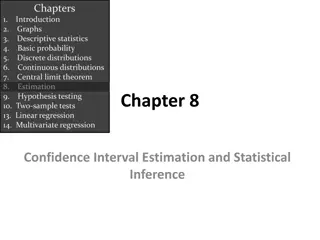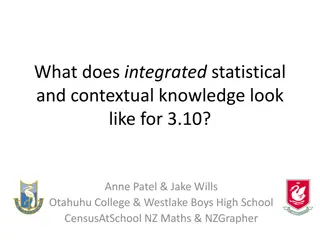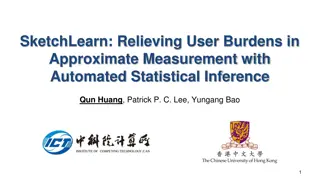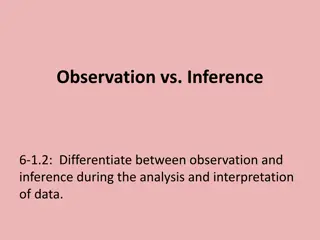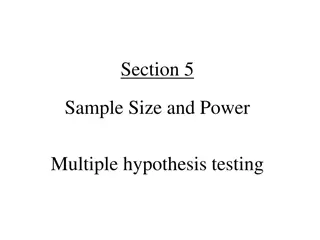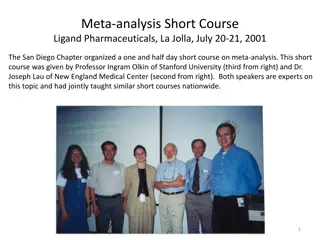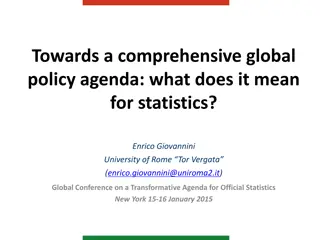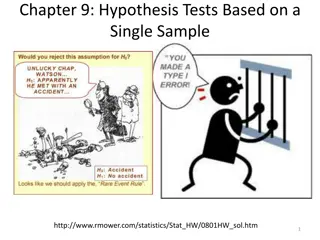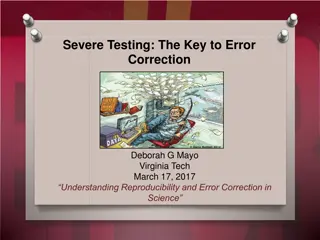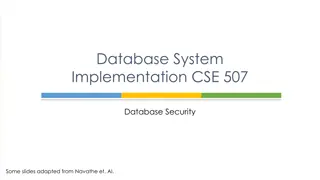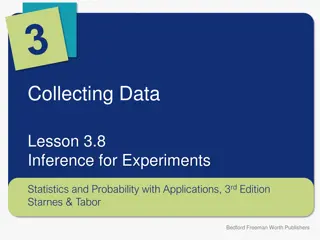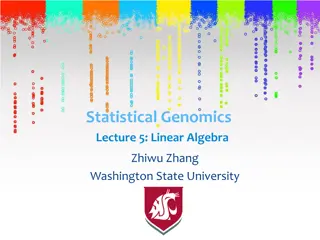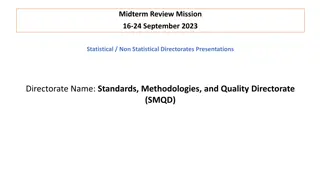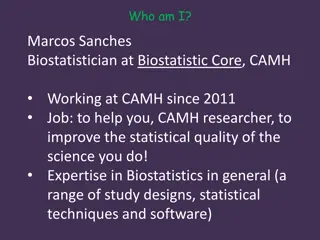Statistical Inference and Testing in HUDM4122
The course announcement includes changes in homework deadlines, discussion of confidence intervals and statistical significance testing, along with examples on how to calculate lower and upper bounds for confidence intervals, and determining the percentage of games a sports team will win. The content emphasizes the importance of understanding statistical significance in hypothesis testing.
Download Presentation

Please find below an Image/Link to download the presentation.
The content on the website is provided AS IS for your information and personal use only. It may not be sold, licensed, or shared on other websites without obtaining consent from the author. Download presentation by click this link. If you encounter any issues during the download, it is possible that the publisher has removed the file from their server.
E N D
Presentation Transcript
HUDM4122 Probability and Statistical Inference April 1, 2015
First Announcement HW8 will be due on April 15, rather than April 13 I don t expect us to get through the entire lecture today, so I decided to delay the homework rather than splitting it
Q5 Take a variable with mean = 12 and SE = 6. What is the variable's lower bound for its 90% Confidence Interval? (Give two digits after the decimal place) Answers were all over the place, so let s go over this together
Q6 You are testing a new brand of Moose Chow. You feed it to 25 meese. The meese eat an average of 10 pounds of Moose Chow. The standard deviation for how much they eat is 1 pound. What is the upper bound of the 95% confidence interval for the average amount of Moose Chow a moose eats? A lot of people got incorrect answer of 11.96, which comes from confusing standard deviation with standard error Let s take a look
Q10 Your favorite sports team is already 25 games into their season, and has a win-loss record of 15-10 (0.6). What is the lower bound on the 95% confidence interval for what percentage of games they will win by the end of the season? (Give two digits after the decimal) No common wrong answers, so let s go over this together
Statistical Significance Testing The core of the traditional frequentist paradigm of statistics
Statistical Significance Testing The core of the traditional frequentist paradigm of statistics Determining what is probably not not true Not the same as determining what is true!
In statistical significance testing We start with a hypothesis Curriculum A is better than curriculum B
In statistical significance testing We start with a hypothesis All swans are white
In statistical significance testing We start with a hypothesis My missing socks are due to aliens
We dont try to prove that our hypothesis is true It s very difficult to prove something is true
We dont try to prove that our hypothesis is true I looked at 30 swans. They were all white. Therefore, all swans are white. Insufficient evidence!
We dont try to prove that our hypothesis is true I looked at 30 swans. They were all white. Therefore, all swans are white. Insufficient evidence! (Convenience sample?)
Instead, we try to look for evidence that our hypothesis is false
Instead, we try to look for evidence that our hypothesis is false We create what is called a null hypothesis
Instead, we try to look for evidence that our hypothesis is false We create what is called a null hypothesis Which basically means that we say nothing is going on here
Instead, we try to look for evidence that our hypothesis is false We create what is called a null hypothesis Some swans are not white My missing socks are due to some factor other than aliens Curriculum A is not better than Curriculum B
And we refer to our original hypothesis as the alternative hypothesis
Example Null Hypothesis: Some swans are not white Alternative Hypothesis: All swans are white
You Try It Null Hypothesis: My missing socks are due to some factor other than aliens Alternative Hypothesis:
You Try It Null Hypothesis: My missing socks are due to some factor other than aliens Alternative Hypothesis: Aliens stole my socks
You Try It Null Hypothesis: Curriculum A is not better than Curriculum B Alternative Hypothesis:
Usually Its Thought of as Null Hypothesis: Curriculum A is not better than Curriculum B Alternative Hypothesis: There is a difference between Curriculum A and Curriculum B And we ll get into why a little later
The Goal Find evidence that will help you distinguish between the null hypothesis and the alternative hypothesis
So why Do we turn it around this way?
Again It s hard to prove something is true It s not as hard to find evidence that there must be something going on
Again It s hard to prove something is true It s not as hard to find evidence that there must be something going on Determining what is probably not not true
The conceptual structure of a statistical test I assume that H0is true What is the probability that I see the data I see, if H0is true?
Not the same What is the probability that I see the data I see, if H0is true? What is the probability that H0is true, if I see the data I see?
Example If I want to study the difference between two curricula I ask the question What is the probability that I see the data I see, if there is no difference between curricula?
You try it If you want to study whether Japanese high school students are off-task less than American high school students What question do you ask?
You try it If you want to study whether students who take your curriculum have an average learning gain greater than zero What question do you ask?
A statistical test of a hypothesis requires A null hypothesis, H0 A alternative hypothesis, Ha An value and tailedness You then look at the data to compute A p-value
Weve already discussed the null and alternative hypotheses The third part of the test is the alpha and tailedness, which come together to identify the rejection region
You may remember from last class was the parameter we used to define the area outside the confidence interval If = 0.05, 95% CI region is [0.025, 0.975] If = 0.01, 99% CI region is [0.005, 0.995] If = 0.10, 9o% CI region is [0.05, 0.95]
When we are doing a statistical test We are looking to see whether our probability is in the range Or in other words, whether p is less than Or in other other words, is the probability that we will reject the null hypothesis, even when it is true
Remember from Confidence Intervals A 95% Confidence Interval means That given our data, the true value can be expected to be inside this range 95% of the time And outside the range 5% of the time
Analogy A 95% Confidence Interval means That given our data, the true value can be expected to be inside this range 95% of the time And outside the range 5% of the time Similarly, with a statistical test and = 0.05 We can trust that the null hypothesis is false 95% of the time But 5% of the time we may be rejecting the null hypothesis even though it is true
Terminology If a statistical test is such that p < Then we say the result is statistically significant
There is another alternative Which I totally, totally, totally don t recommend
There is another alternative Which I totally, totally, totally don t recommend
One-tailed test Which I totally, totally, totally don t recommend








